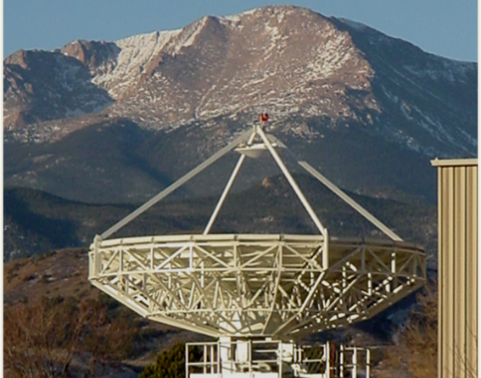A Safe Place Among the KaSTARS: NASA Considering Surplus Army Satellite Antennas

On Feb.15, 2013, an asteroid estimated to have been only 55 feet in diameter plunged into Earth’s atmosphere at many times the speed of sound. Friction with the air soon heated the falling rock until it became white hot and finally exploded over Chelyabinsk, Russia, shattering windows and damaging buildings. More than 1,500 people were injured by the blast. Luckily, the Chelyabinsk asteroid exploded in the air rather than crashing into the ground — the impact of a rocky asteroid the size of a shopping mall could easily raise a dust cloud that would block out the sun for decades, causing an unending winter and possibly wiping out all life on Earth.
Asteroids consisting of rock, iron and ice are constantly traveling through space, and many of them cross the Earth’s orbit every week. Some of these asteroids are no larger than a grain of sand while others are miles long. A collision with larger asteroids could spell doom for the planet, so, to counter this threat, the National Aeronautics and Space Administration (NASA) is developing a network of Ka-band radar antennas that will scan space for objects on a collision course with Earth to provide sufficient warning for NASA to take defensive action. The extremely high radio frequencies used by the Ka-band will allow NASA observers to determine the size, direction, speed and, in some cases, the composition of the approaching object. NASA has dubbed this project Ka-band Object Observation and Monitoring (KaBOOM).
To aid in their effort, NASA contacted Defense Communications and Transmission System (DCATS) requesting two surplus Ka-band satellite earth terminals. NASA will use the antennas for feasibility testing and, eventually, to provide initial space observation and monitoring capabilities. The surplus antennas are part of DCATS’ Ka-band Satellite Transmit and Receive System (KaSTARS) program, which provide enterprise-level satellite communications services for DOD users world-wide. The two terminals requested by NASA are currently in storage, as the Army has recently approved the disposal of surplus terminals. Since KaSTARS is being replaced by a new DCATS program, the Modernized Enterprise Terminal, the KaSTARS terminals are no longer needed. Transferring these terminals to NASA will save the Army the expenses of storing and eventually disposing of the surplus equipment.
NASA personnel recently inspected the KaSTARS installation at the Joint Satellite Engineering Center in Aberdeen Proving Ground, Maryland, and also visited the warehouse in Wilkes Barre, Pennsylvania, to view the terminals. NASA plans to ship the terminals to the Kennedy Space Center in Titusville, Florida, for assembly and testing. Once operational, the KaSTARS antennas will become the initial project KaBOOM antennas, scanning the sky for threats from outer space.
Transferring the surplus KaSTARS terminals to NASA will provide project KaBOOM, which is in the early stages of development, with valuable equipment for the proof of concept, initial testing and startup phases at little cost. NASA, the Army and the entire planet will benefit from this transfer as NASA develops a radar system that will alert them of potential life-ending cosmic threats.
Related News
-
Jason Morneault assumes command of Wideband Enterprise Satellite Systems
August 22, 2023On June 30, Project Manager Integrated Enterprise Network (IEN) conducted an assumption of charter ceremony for the Wideband Enterprise Satellite Systems (WESS) Product Management Office. -
Joe David values determination, hands-off leadership and family
June 27, 2023“You must want it mentally and you must show it physically, giving it your all.”
As an aspiring high school football player, Joe David received this advice from his father.
-
Darius White Explains the Power of Storytelling
April 26, 2023“Storytelling is a way to connect with people, even if it is fanciful or scientific, on another level,” said Darius White.
Work for Us
Join a winning team! Search for job opportunities with PEO Enterprise.
Work with Us
Help support important missions. Explore ways your company can work with PEO Enterprise.